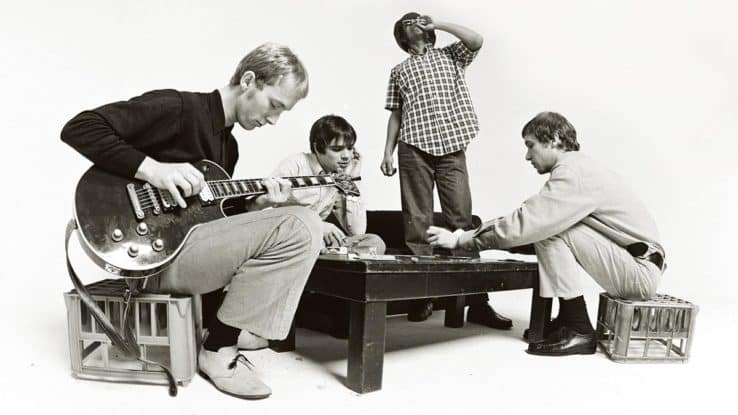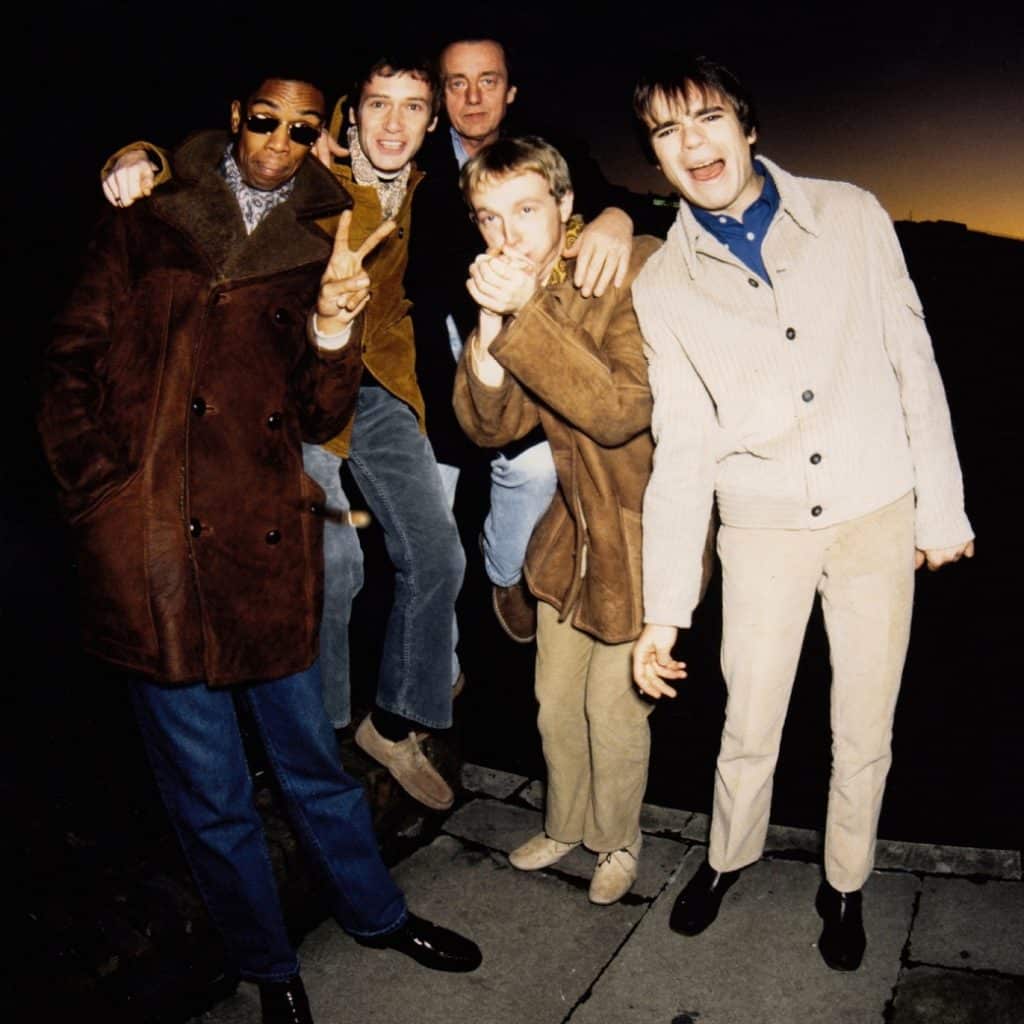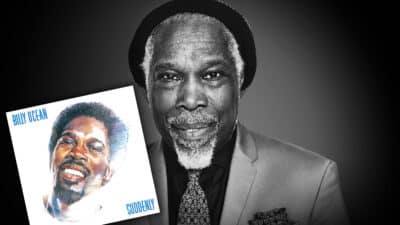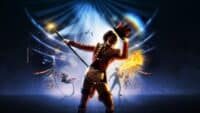Music

Gallery
On the road with Ocean Colour Scene
Photographer Tony Briggs talks us through his favourite shots of the Britpop mods to celebrate the release of his lavish new art book, Behind The Scene
“The 90s still seem like yesterday,” laughs Tony Briggs. “And also several lifetimes ago!”. Now sitting in an office covered in platinum discs and album covers, surrounded by boxes of photos that he forgot in his loft until lockdown forced a clear-out, Briggs has been living in the 90s for the last few years now.
Meeting Ocean Colour Scene in 1995 after a tiny record show in Piccadilly, Briggs invited the fledgling band to his studio for a photoshoot and ended up becoming the unofficial fifth member – staying on as the band’s photographer (and sometimes music video director) for next three decades. Now assembling all of his best work into a handsome coffee table book, Behind The Scene, Briggs has created a photo essay of a time and place that seems as distant now as it still feels close.
“I don’t want to be too dramatic about it, but I really do think we caught the end an era,” he says. “Digital wiped out the filming process, and it wiped out the record companies at the same time. It was a sea change. And Ocean Colour Scene caught the cusp.”
Releasing his new book ahead of the news the band have just signed with Alan McGee and are now working on their first new album in almost a decade, Briggs talks us through a few of his favourite shots from his days on the road with Ocean Colour Scene.

Credit: Tony Briggs
“They were really were a tight group. I love this shot, and I love that it’s just a random snap but that it’s shot in a large format Hasselblad camera. I planned to shoot a lot more, but we went outside and it was just far too cold. I think I took one roll of film and then they all disappeared!
“We just clicked. I’ve photographed bands and musicians and actors for years, but it was different with Ocean Colour Scene. I mean, if I had the talent, I could have been in a band. We were just we were so like minded. Steve [Cradock] was just like one of my mod mates, y’know? We all had the same interest in music, clothes, scooters and all the rest of it. They were all very suspicious of the music press too, so to get on the inside of that was quite flattering really.”

Credit: Tony Briggs
“This one is from the same session, and it was just such a great shoot. Because that’s just what they did – they just turned up, played cards, smoked weed and drank too much. That shot is just really representative of the way they were.
“We used that shot as the cover for the single ‘You’ve Got It Bad’, but we had to edit out the joint right at the 11th hour. This is obviously before digital too, where it would have been really easy, but we had to actually physically paint it out. We got away with the Rizla though…
“When I went back to the archives I found that roll of film. At the beginning of the roll there were pictures of [my wife] Alice and our dog at home at my flat. So I must have just had the camera on my neck and turned up at the studio. That’s how casual it all was back then.”

Credit: Tony Briggs
“We were obviously meant to be shooting the cover of Mosely Shoals at the Mosely Shoals studio, but they had a burst water-main so the band rented Woodbine Street Studios, which is Dr. Robert’s place in Leamington. We had a brief to get something for the album cover that day, but nobody knew what it was gonna be. So we just went for a walk. It was lunchtime and the guys were on their way to the chip shop when we went through Jephson Gardens and found that spot. It looks really dramatic on the cover, but it’s just a little water tower I think. I just sort of dumped them in front of it and shot a roll of film.
“It could have been any shot from that set to be honest. It’s always like trying to shepherd cats when there’s four of them. They’re all always doing something different. So that was probably just the best shot for all of their eyelines – Damon and Oscar looking out, Steve and Simon looking straight down the lens.
“You can only really do that kind of fisheye shot on a Hasselblad because the frame is square. The centre stays undistorted. I just had that lens on all the time back then, just because it gave everything a kind of a retro, muddy, psychedelic look. People probably think Steve’s got a head shaped like a plectrum after all those shots…!”
Credit: Tony Briggs
“That’s fantastic, isn’t it? They were a bit more organised there, because they were already a big band at that point. They were the same guys as they always were though. I think we all just had a bit more money. Moseley Shoals sold at least a million copies, y’know, and they only signed for 10 grand. The video we shot for ‘Hundred Mile High City’ cost more than that.
“When we were talking about the staging I remembered that it was either a Small Faces or a Who album that had the band standing on white podiums on the back. So we rang in the idea from Spain, because we were flying back to shoot that video, and when we walked into the studio we had this massive set built for us. And then I found that Small Faces album, just the other day, and the podiums are really, really tiny. You could drive a car around ours!”

Credit: Tony Briggs
“I walked out in the front of that stage with a little camcorder right before the set started. Because we all kind of look the same, the stage manager whacked the lights up thinking I was Simon or whoever. So the lights come on and the crowd explodes and I nearly dropped the camera. Honestly, the hairs on my arm still stand up just thinking about it. They’ve got some bottle, I think.
“Ocean Colour Scene were meant to be headlining that night, but they tossed a coin with Radiohead and swapped places. Pete Townsend and Ray Davis were both there that night too. But we all just took it all for granted. You know, if we did that now, I’d like to think I’d savour it a bit more. But that’s the arrogance of youth I guess. It just sort of washes over you.”

Credit: Tony Briggs
“I mean, just to be in that room with that lot. OCS supported Oasis on their European tour, but it was all a bit fractious. That’s when the Gallagher’s weren’t talking to each other, so they had separate cars and separate hotels and all this sort of thing. But when we were all in the studio together for Fire & Skill, it was just fantastic. To hear them play Jam songs together, the stuff I used to listen to as a kid, it was incredible.
“You can see here that Paul Weller’s fingers are taped together. He had a couple of broken fingers. He was meant to be playing guitar with Noel on ‘To Be Someone’ on that day. I also remember that Liam didn’t know the words. Steve was meant to sing ‘Carnation’ but he insisted Liam sang it instead. He’d only heard it once or twice so in those pictures he’s holding the words right in front of his face, because he wouldn’t take his sunglasses off! What a day that was though.”
Ocean Colour Scene start their 2024 UK tour on May 17, with tickets available here.
Behind The Scene: Ocean Colour Scene Imagery And Imagination 1995-1998 is out now via Two Can Ltd.









